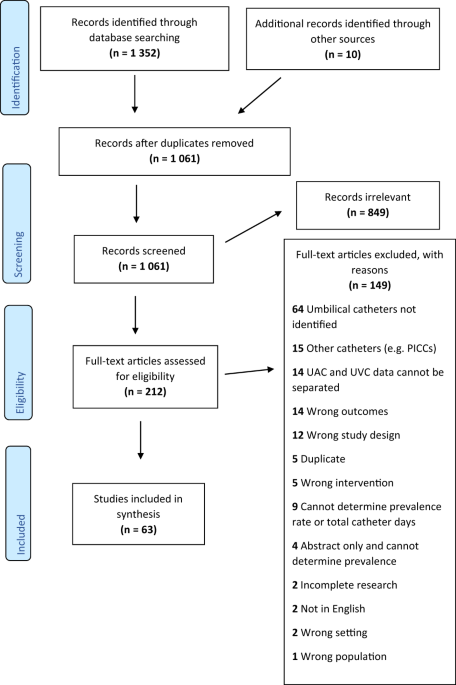
Adverse events associated with umbilical catheters: a systematic review and meta-analysis
- Select a language for the TTS:
- UK English Female
- UK English Male
- US English Female
- US English Male
- Australian Female
- Australian Male
- Language selected: (auto detect) - EN
Play all audios:
To determine the incidence of adverse events (AEs) associated with umbilical catheters in the neonatal population.
Systematic review and meta-analysis of observational studies and randomized controlled trials published between 2010 and 2020.
In total 14,226 umbilical venous catheters (UVCs) and 4228 umbilical arterial catheters (UACs) were included. Overall, 13.4% of UVCs were associated with an AE (95% CI: 10.1–17.0) or 2.4 per
1000 catheter days (95% CI: 1.8–3.0). UACs had an AE rate of 9% (95% CI: 5.9–12.8) or 0.87 per 1000 catheter days (95% CI: 0.4–1.3). UVC malposition was the most common (41.7% [95% CI:
27.6–56.5]). Local injury from UAC taping was the most common AE in one study.
Umbilical catheters have a high incidence of AEs. Research into accurate methods of tip verification, tip surveillance, and securement is required.
All authors have approved the final article, have made substantial contributions to the review, are accountable for the work presented and acknowledge that they are entitled to authorship of
this article. KG was responsible for investigation, writing-original draft preparation, RS for investigation, writing-reviewing, supervision, AU for investigation, writing-reviewing,
supervision, SM for writing-reviewing, industry expertise, TK for writing-reviewing, industry expertise and AE for conceptualization, writing-reviewing, supervision.
The above authors have no competing interests to declare. Independent from the reported project, Griffith University has received investigator-initiated research and educational grants from
product manufacturers (3M, Becton Dickinson, Cardinal Health), to support research led by AU. Independent from this project, Griffith University has received investigator-initiated research
and educational grants from product manufactures (3M, Access Scientific, BD/Bard, Medical Specialties Australia, Vygon), to support research led by TK.
Publisher’s note Springer Nature remains neutral with regard to jurisdictional claims in published maps and institutional affiliations.
Anyone you share the following link with will be able to read this content: